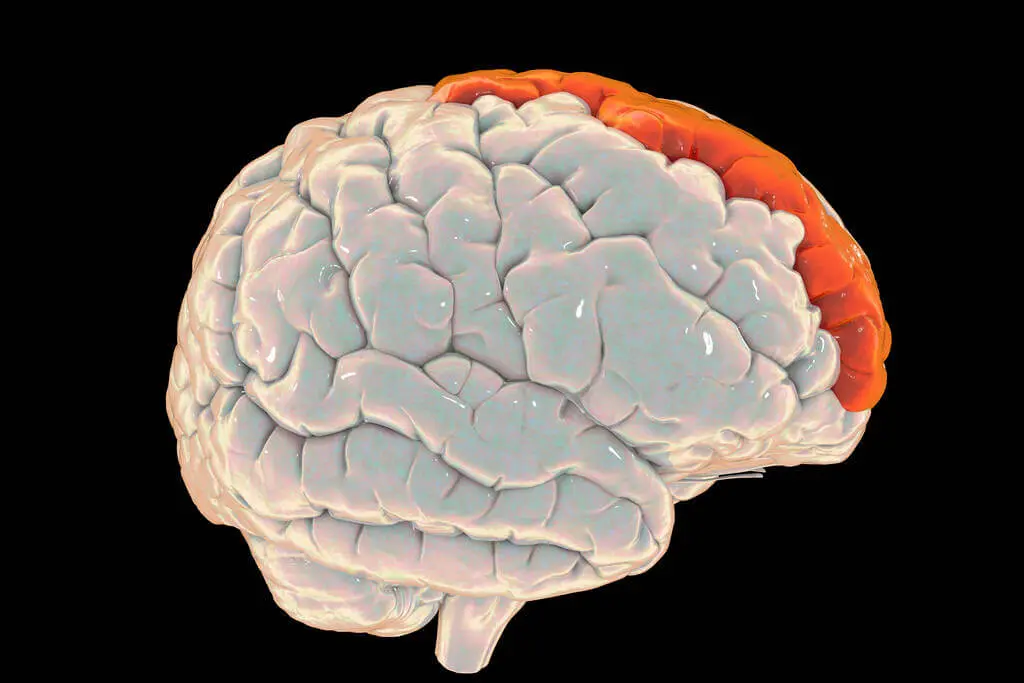What is Psychopathy?
Psychopathy is a personality disorder characterized by a lack of empathy, guilt, and remorse, along with manipulative and deceitful behaviors. Individuals with psychopathy often display superficial charm, a grandiose sense of self-worth, and a tendency to engage in impulsive and risky behavior. Psychopathy is known to be a relatively rare condition, affecting around 1% of the general population, with higher prevalence rates among incarcerated populations.
Psychopathy is commonly assessed using tools such as the Hare Psychopathy Checklist-Revised (PCL-R), developed by Canadian psychologist Robert Hare. This tool measures various psychopathic traits and behaviors, including a lack of empathy, shallow emotions, and a tendency to manipulate and exploit others. The PCL-R is based on a set of criteria for psychopathy, which have been extensively researched and validated.
Understanding the concept of psychopathy is crucial for identifying and interacting with individuals who display psychopathic traits. By recognizing the signs of psychopathy, such as a lack of remorse or a disregard for others’ feelings, individuals can better protect themselves from potential manipulation and exploitation.
It is important to remember that psychopathy is a complex condition, and not all individuals displaying psychopathic traits are inherently dangerous or criminal. However, being aware of the characteristics and behaviors associated with psychopathy can aid in understanding and dealing with these individuals more effectively.
Understanding the Manifestations of Psychopathy
Understanding the manifestations of psychopathy is a complex task that presents challenges even for neuroscientists. The search for neurological hallmarks of psychopathy has proven to be elusive. However, researchers have explored potential indicators such as defects in the frontal cortex and reduced gray matter in unsuccessful psychopaths.

The Frontal Cortex and Gray Matter
The frontal cortex is responsible for key functions related to decision-making, impulse control, and empathy.
Studies suggest that individuals with psychopathy may have impairments in these areas, leading to their characteristic lack of empathy, guilt, and remorse.
Additionally, reduced gray matter has been found in certain brain regions associated with emotional processing, such as the amygdala and the anterior cingulate cortex.
To gain further insights into how the psychopathic brain interacts (or fails to interact) with others, researchers have turned to functional MRI (fMRI). This imaging technique allows scientists to observe brain activity in real-time.
By comparing the brain activity of individuals with psychopathy to that of non-psychopathic individuals, fMRI studies have highlighted the essential feature of psychopathy: a lack of emotional engagement and empathy. These findings further support the notion that psychopathy stems from underlying neurological differences.
Further Research Required
While advancements in neuroscience have shed light on the manifestations of psychopathy, further research is needed to deepen our understanding of this complex disorder. By integrating behavioral, neurological, and genetic perspectives, we can continue to unravel the intricate workings of the psychopathic mind.
Prevalence of Psychopathy
The prevalence of psychopathy is a topic of ongoing research. While exact prevalence rates vary across different populations and studies, it is generally agreed upon that psychopathy is relatively rare but impactful.
Robert Hare, a leading expert in psychopathy, has conducted extensive research on its prevalence. His research has found that approximately 1% of the general population meets the criteria for psychopathy, while in correctional settings, the prevalence jumps to around 15-25%.

Studies examining specific populations have shown varying rates of psychopathy. For example, research suggests that psychopathy is more prevalent among male than female inmates. Additionally, studies have explored the prevalence of psychopathy in different cultures and found differences in rates between countries.
It is important to note that psychopathy is not synonymous with criminal behavior. While a significant proportion of individuals with psychopathy may engage in criminal activity, many lead successful lives in various professions. This highlights the need for a broader understanding of psychopathy beyond its association with deviance.
Signs and Symptoms of Psychopathy
Psychopathy is a complex personality disorder characterized by a range of signs and symptoms. While the diagnosis of psychopathy is typically determined through comprehensive assessment tools like the PCL-R, there are certain signs and behaviors that can indicate the presence of psychopathic traits.
Primary Deviance Behaviors
Primary deviance refers to the initial acts of deviant behavior that individuals engage in, which violate societal norms or expectations. These behaviors are often associated with a lack of conformity to established rules and customs. Primary deviance can range from minor rule-breaking to more significant transgressions.
Behaviors commonly associated with primary deviance may include acts such as vandalism, theft, drug use, or engaging in aggressive behavior. These actions are typically committed without a strong identity as a deviant or criminal.

Primary social deviance is closely tied to the concept of deviance itself, as it involves the violation of social norms or rules. Deviance refers to any behavior that is considered to be different, unusual, or unacceptable within a particular society or culture.
While primary deviance may involve unlawful or socially deviant behaviors, it is important to note that not all instances of primary deviance lead to criminal behavior. However, primary deviance can be a precursor to more serious and repetitive offenses if not addressed or deterred.
The societal response to primary deviance also plays a significant role. If the response is severe and individuals are stigmatized or labeled as deviants, it may increase the likelihood of further deviant or criminal acts. Conversely, if the response is more lenient or rehabilitative, individuals may be less likely to engage in repeat offenses.
Understanding primary deviance and its relationship to deviance and crime is essential for developing strategies to identify and address deviant behaviors early on. By focusing on prevention and intervention, society can potentially reduce the escalation of deviant acts and promote more positive and law-abiding behavior.
Secondary Deviance Behaviors
Secondary deviance refers to the continued engagement in deviant behaviors as a result of external reactions and labels placed upon an individual. When it comes to individuals exhibiting signs of psychopathy, secondary deviance behaviors are often characterized by manipulation and antisocial behavior.
Unlike primary deviance, secondary deviance occurs when an individual begins to internalize their deviant identity and actively engage in behavior that aligns with this identity. Psychopathic individuals may manipulate and exploit others for personal gain, often without remorse or empathy. They may exhibit deceitful and manipulative behaviors, such as pathological lying or charm, to manipulate others for their own benefit.

Examples of secondary deviance behaviors commonly observed in psychopathic individuals include manipulation, lack of empathy, and a disregard for the well-being of others. They may engage in conning and manipulating behaviors to exploit others financially or emotionally.
Additionally, they may display a lack of remorse or guilt for their actions, making it easier for them to continue engaging in deviant behaviors.
It is important to distinguish between primary and secondary deviance behaviors in psychopathic individuals. While primary deviance refers to the initial engagement in deviant actions without a strong deviant identity, secondary deviance is characterized by the internalization of this identity and the continued engagement in deviant behaviors. Secondary deviance in psychopathic individuals is marked by manipulation, antisocial behavior, and a lack of empathy.
Callous-Unemotional Traits in Children and Adolescents with Psychopathic Tendencies
Callous-unemotional traits are commonly observed in children and adolescents with psychopathic tendencies. These traits can manifest in various behavior and emotional responses, providing key indicators of their psychopathic disposition.
Children and adolescents with callous-unemotional traits often display a lack of empathy, showing little concern for the feelings or well-being of others. They may exhibit a shallow affect, demonstrating a limited range of emotions and a difficulty in forming emotional connections with others. Additionally, these individuals tend to have a disregard for social norms and rules, often engaging in aggressive or antisocial behaviors without remorse or concern for the consequences.

These callous-unemotional traits can have long-term effects on their social relationships. These individuals may struggle to form and maintain meaningful connections with others due to their inability to understand and respond to the emotions of those around them. Their lack of empathy and remorse can lead to manipulative and exploitative behavior, causing significant harm to their relationships and the well-being of those involved.
Identifying and addressing callous-unemotional traits in children and adolescents is crucial to providing early intervention and support. Recognizing these indicators and seeking appropriate professional help can mitigate the potential negative impact of these traits and promote healthier social and emotional development.
Five-Factor Personality Traits in Female Psychopaths
Female psychopaths often exhibit specific personality traits that can be categorized within the framework of the five-factor model. This model, also known as the Big Five personality traits, includes extraversion, agreeableness, conscientiousness, neuroticism, and openness to experience.
1. In terms of extraversion, female psychopaths tend to display high levels of assertiveness, dominance, and a desire for excitement. They may be charming and charismatic, using these qualities to manipulate others for personal gain.

2. Agreeableness is a trait in which female psychopaths often score low. They lack empathy, compassion, and concern for the well-being of others. Instead, they prioritize their own desires and goals, often disregarding the needs and feelings of those around them.
3. Conscientiousness is typically low in female psychopaths. They exhibit a lack of impulse control, engaging in impulsive and risky behaviors without considering the potential consequences. This lack of self-discipline and disregard for rules can lead to involvement in criminal activities.
4. Neuroticism, characterized by emotional instability and negative emotions, tends to be low in female psychopaths. They often appear emotionally detached and unaffected by stress or anxiety, presenting a calm and collected demeanor even in challenging situations.
5. Finally, openness to experience in female psychopaths is often high, as they seek novelty, excitement, and new experiences to fulfill their own desires. This can manifest in their willingness to engage in risky or deviant behaviors that others might find unacceptable.
Understanding these five-factor personality traits in female psychopaths can aid in identifying and interacting with them, recognizing the manipulative tendencies and the potential harm they may bring to relationships and social interactions.
Activity Levels in People with Pathological Liar Syndrome and Serial Killers
Pathological liar syndrome and serial killers exhibit distinct activity levels that manifest in their behavior, with potential implications for their actions.
Individuals with pathological liar syndrome often display high levels of verbal activity. They engage in excessive storytelling, fabricating elaborate tales, and exaggerating their achievements to manipulate and deceive others. This heightened activity serves their goal of gaining attention, admiration, or personal gain. For example, a case study reported a pathological liar who constantly claimed to have interacted with renowned individuals or experienced extraordinary events, despite evidence that contradicted these claims.
In contrast, serial killers exhibit lower levels of overt activity. They often engage in careful planning and preparation before carrying out their crimes, displaying a patient and methodical approach. This lower activity level allows them to evade detection and continue their violent acts undetected for extended periods. For instance, the infamous serial killer Ted Bundy meticulously chose his victims, researched their routines, and stalked them over time before executing his meticulously planned attacks.

The implications of these activity levels are significant. Pathological liars’ excessive verbal activity can damage relationships, as their deceitful behavior erodes trust and credibility. In contrast, the low overt activity of serial killers contributes to their ability to blend into society, making them challenging to identify and apprehend.
Understanding these activity levels is crucial for recognizing and addressing the harmful behaviors associated with pathological liar syndrome and preventing potential dangers posed by serial killers.
Social Processes Related to Deviance and Psychopathology
Social processes play a significant role in shaping and understanding deviant behavior and psychopathology. Deviance refers to behaviors that violate social norms, while psychopathology refers to the study of mental disorders, including psychopathy.
Types of Theoretical Perspectives on Deviant Behavior
Understanding deviant behavior requires a comprehensive examination of various theoretical perspectives within the field of sociology. These perspectives provide insights into the causes and implications of deviant behavior, shedding light on the social processes and structures underlying such actions.
1. Structural-Functionalism: This perspective views deviance as a necessary element of society. According to this viewpoint, social norms and rules exist to maintain stability, and deviance, by challenging these norms, helps to reinforce the boundaries of acceptable behavior.
2. Conflict Theory: This perspective emphasizes the power dynamics present in society. It suggests that deviance arises due to social inequality and conflicts between dominant and marginalized groups. Deviant behavior, in this context, can be a form of resistance or rebellion against oppressive social structures.

3. Symbolic Interactionism: This perspective focuses on the meanings attributed to deviant behavior. It suggests that deviance is not inherently problematic; rather, it is a product of social interaction and the interpretations placed on certain actions. Deviance is seen as a result of societal labeling, with individuals adopting deviant roles based on how they are perceived and labeled by others.
4. Control Theory: This perspective suggests that individuals engage in deviant behavior when their social bonds and connections to conventional society are weakened or broken. It posits that deviance is a function of insufficient socialization and weak attachment to conventional institutions, such as family, school, and community.
These theoretical perspectives provide different lenses through which deviant behavior can be understood. By analyzing deviance from multiple angles, sociologists can gain valuable insights into the complex nature of deviant behavior and its underlying causes and implications within society.
Interacting with Manipulative Individuals Who Exhibit Signs of Psyhcopathy
When dealing with manipulative individuals who exhibit signs of psychopathy, it is crucial to employ effective strategies to protect oneself and maintain personal boundaries. Here are some tips for interacting with such individuals:
1. Educate Yourself: Learn about psychopathy and understand the characteristics and tactics of manipulative people. This knowledge will help you recognize their behaviors and motivations.

2. Trust Your Instincts: If something feels off or you sense manipulation, trust your gut instinct. Manipulative individuals are skilled at creating doubt and confusion, so rely on your intuition to guide you.
3. Set Firm Boundaries: Establish clear boundaries and make them known to the manipulator. Be unwavering and assertive in asserting your limits. Psychopaths thrive on testing and crossing boundaries, so it is crucial to stand firm.
4. Prioritize Self-Care: Manipulative individuals can be draining, emotionally exhausting and exhibit signs of having antisocial personality disorder. Take care of your physical and mental well-being by practicing self-care activities and seeking support from trusted friends or professionals.
5. Communicate Effectively: Be direct, assertive, and concise in your communication. Manipulators often exploit vagueness or ambiguity, so be clear and resolute in expressing your wants and needs.
6. Maintain Emotional Distance: Psychopaths can be skilled at emotional manipulation and emotional abuse, so it is important to detach yourself emotionally from their tactics. They often have a very manipulative personality. Focus on facts and logic rather than getting caught up in their emotional web.
7. Document Interactions: Keep a record of conversations or encounters with the manipulative individual. This will help validate your experiences, identify patterns of manipulation, and serve as evidence if needed.
Remember, the most important thing when dealing with manipulative individuals is to prioritize your own well-being and moral judgment, and not allow yourself to be manipulated. Recognizing manipulative behaviors and an abusive person, and implementing strong strategies will help you navigate interactions with psychopathic individuals effectively while safeguarding your own mental and emotional health.
Conclusion
Navigating interactions with a manipulative and an abusive person who exhibit signs of psychopathy can be a daunting and difficult task.
However, understanding the underlying causes of deviant behavior, such as symbolic interactionism and control theory, as well as using effective strategies to protect yourself and maintain personal boundaries can help you effectively deal with these types of people.
By following the tips listed above – such as educating yourself , setting firm boundaries, and maintaining emotional distance – you can protect yourself from manipulation and maintain your own mental and emotional health.





